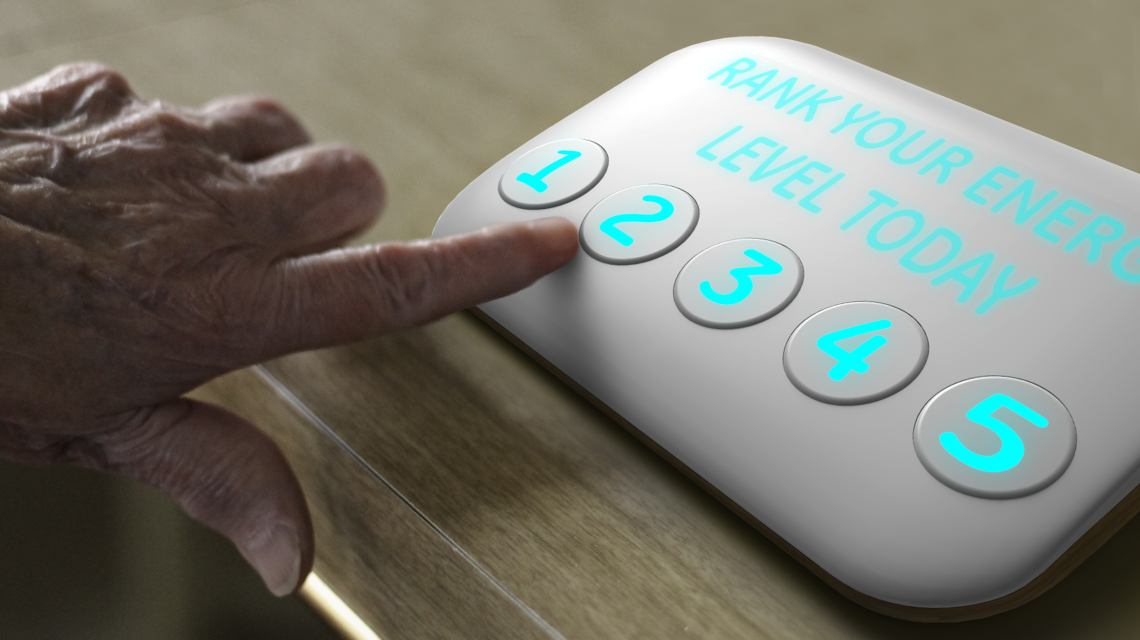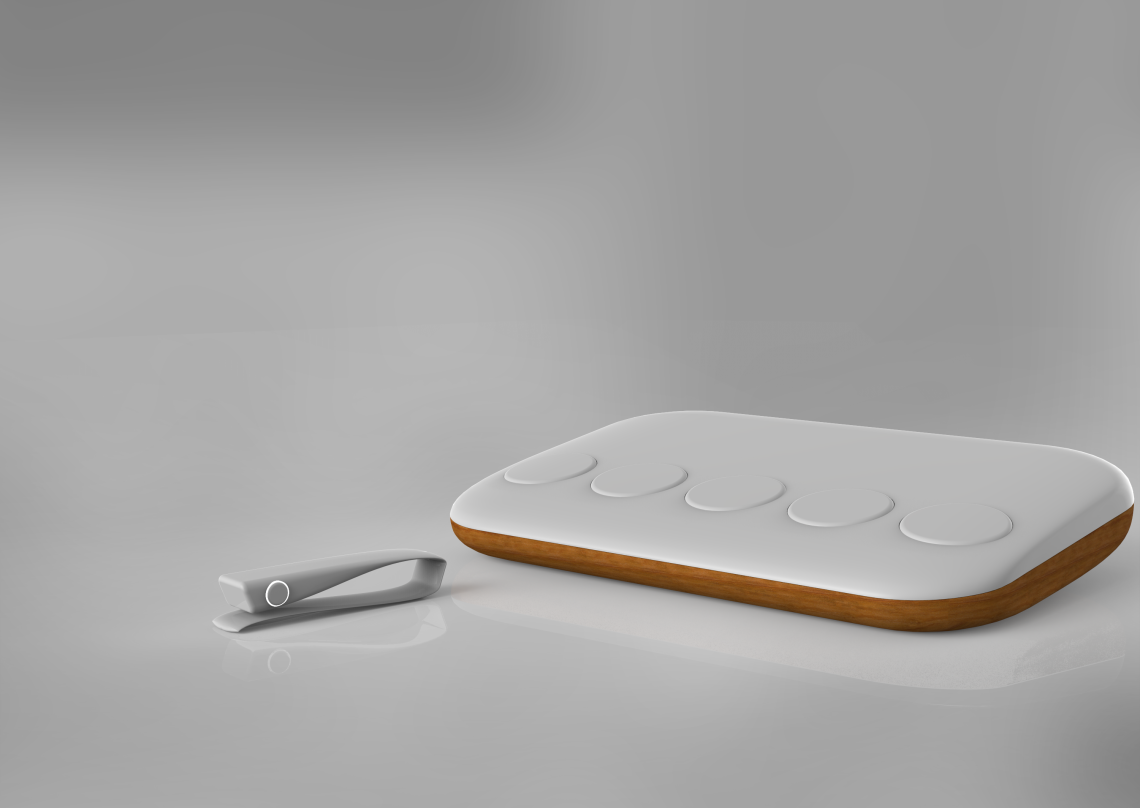
Assignment
Students exercise their design muscles throughout an entire product development experience from framing through ideation to final concepts. In fall 2014, students worked with guidance from Logitech to develop products for the healthcare wearables space.
Synopsis
A health tracking system for the elderly
Research began with exploring the world of healthcare wearables. They are worn by mostly young, healthy and athletically inclined users. These were not the people who would be helped most by tracking their health.
The elderly people interviewed and observed desire personal health data, but don’t see it as a need.
Healthcare providers definitely want easily trackable statistics, like activity, heart rate and sleep patterns.
This data is very useful when developing healthcare plans for elderly patients. Today, doctors rarely receive the full picture of a patients health within limited appointment discussion time. The goal of my wearable is to provide more effective diagnoses for elderly patients through a history of their daily vitals.
The digital journal would live in a centralized space in the home, such as my grandparents kitchen. Throughout the day as my grandparents pass by, their wearable sensors would buzz letting them know that the digital journal requires information from them. The belief is the user is more likely to report accurately when interacting with a device at the moment of question rather than reporting to their doctor days or weeks later.
The form of the digital journal came through testing physical prototypes with my grandparents and pulling inspiration from the objects in their home.
The original design included a metallic touch screen with a back lit display. I quickly learned that my user group responded better to physical buttons and a bright metallic object would stick out like an sore thumb in my grandparents home.
Proposed User Experience
The design consists of a discrete wearable sensor used to capture data such as heart rate, sleep pattern and activity level. This sensor has no interaction past the inclusion of one panic button in case of emergency. Since this piece of the system is small, it was designed for next to no user interaction to be included on the wearable piece.
The digital journal object visually requests information from users concerning food intake, medication usage, pain level and nausea. Since this criteria can be subjective, it is presented in a simple multiple choice fashion.
